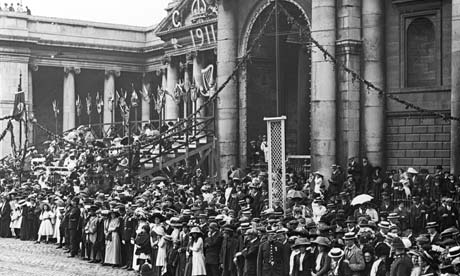So, anyway,
The show was conceived by a theater company that likes to do shows that
"revisit history in contemporary terms by looking at new idioms as a fresh way to explore historical figures or canonical texts. I don’t think it’s cheap. There’s a real populist interest in theater."It was clear both times I saw the show (which changed slightly between its Public and Broadway runs) that the people involved were grounded in history. There was quite funny (for an historian) joke about the need to footnote that was cut somewhere during the Broadway transition, and "The Corrupt Bargain" the cast sings
"John Calhoun says, We need to find a scheme to keep the power in the hands of the chosen few. John Quincy Adams says, If my dad was president, I should get to be president too. Henry Clay says, I’ll make you president if you make me Secretary of State ... All you educated people, you can talk of liberty. But do you really want the American people running their own country? Ooh!"The whole show felt a lot like schoolhouse rock for adults, which isn't to say that the take on history isn't one-dimensional and uncomplicated, but I can't really begrudge a Broadway show that.
I've been thinking of putting together an assignment that asks students to listen through a recording of the show (or even better, watch a video of it, but I'm not sure that kind of thing is legally available) and write about how they think the people who wrote the show came to tell the story they did. Another option would be to come up with another version of the Andrew Jackson story that the playwright could have told, or to pick another historical event and "pitch" a movie or musical idea based on it. For my class this summer, I had an assignment that asked students to write a piece of historical fiction about a natural disaster, and the two people who picked that option did a really good job of footnoting and otherwise explaining the creative decisions they made. I think that they both initially had trouble envisioning the form that these pieces were meant to take, so maybe starting with BBAJ as an example of how some people creatively re-tell history would be a good anchor for the assignment.







